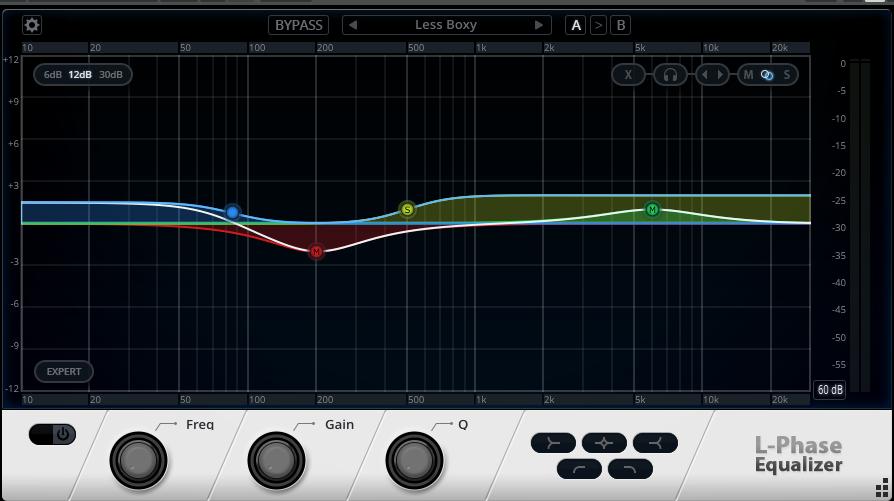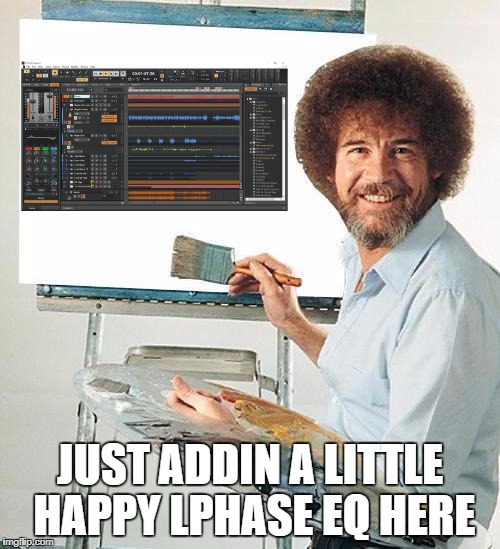“My first mix sounds awesome in my car!”
Said no producer ever…
Every producer and mixer knows the struggle; the infamous car test. You know the drill. You print a near-perfect mix in your home studio and then bounce it with the label, “FINAL MIX_wav” and send it to your phone. You can feel the excitement, energy and anticipation of releasing your masterpiece into the world…and then you step into your car.
The nervous sweat drips down your back and your ears are clogged from hours of non-stop mixing. You press play and immediately regret not going to law school. OK…maybe it’s not that bad but straight from the bat you know your mix isn’t translating well in your car stereo or even the cheap earbuds that came with your phone. You are not alone.
Why does my mix sounds so terrible in my car?
Low mids are muddy, too much reverb, vocals are drowned out, guitars are overly bright and drums sound like they were recorded with a potato. These are some of the common things most producers face when playing their tracks on consumer level systems. The problem with most car stereo systems is bass frequencies being confined to such a small space. If you ever stood outside a closed car blasting loud trap music, it’s usually the bass that you hear over anything else. This is naturally due to bass frequencies featuring waveforms that are thicker and therefore easier to escape.
So how do we fix this and make sure your mixes sound great everywhere? A good start would be to understand how various bands of frequencies “feel” in your eardrums while listening to your favorite professional mixes in your car or using cheap earbuds.
Balance is key
The secret to mixing isn’t the plugins or gear you’re using. Some mixes for major releases today are made entirely in the box. A track off Kendrick Lamar’s new record was made on an iPhone. In other words, gear is NO excuse! A great mix begins with a great song, killer arrangement, solid performances and transparent recordings of this recipe. This is the most important part of music creation so make sure you don’t rush past this! Once you have those lined up in to go in your concoction, where to next?
If you’ve ever recorded a band or played in one, you know the best bands know how mix themselves as opposed to turning up to 11 and causing tinnitus. To make a great mix, balance is everything. This includes adjusting basic levels and panning. If you aren’t hearing the vocal clearly in your mix, consider bringing down other mono elements such as bass or kick down rather than turning the vocal up. In most cases, getting your bass and kick in place prior to everything else would build a solid foundation
When you’re mixing, you are essentially painting a picture like Bob Ross. If Bob put 20 happy little trees in the center of the painting, that wouldn’t make sense. Likewise, take full advantage of the stereo field and spread elements across to achieve balance. Say in your arrangement, a lead guitar playing 1 part and rhythm guitar or acoustic is strumming away, try hard panning the elements against each other. Same goes with rack and floor toms, overhead mics and background vocals.
*Pro tip; experiment with high passing these hard panned elements equally up to maybe 150 hz to remove unwanted bass frequencies that might otherwise muddy your mix. Depending on your style of music, you may want to filter even higher to maybe 300-400 hz for a commercial minded mix. Be careful though, filtering to high might remove some of that much-needed natural “warmth” in your mix.
In most car stereo systems, it’s hard to tell exactly where every element is coming from. Bass is more so felt than heard and good mixes features vocals that are held together by other instruments. Through headphones or monitors, the stereo effect is a little more obvious but how do you translate that in your car?
EQ like a barber
Every good barber or hair stylist cuts hair and “cleans you up”. Barbers don’t add hair or that would be weird.
Mixing the low-end (20hz-350hz) of your music is crucial to achieving a good mix. This “low end” most consists of your bass instrument and kick drum. The kick drum usually can be felt around 100 Hz where the punch lies. The “click” or the batter of the kick is usually a bit higher but it’s only a matter of taste and judgement if you want that in your mix. To make room for the kick, consider carving out semi wide cut around 100-150 hz in your bass instrument to make room for you kick to speak.
As a general rule of thumb, cuts or surgically removing resonant frequencies is better than adding bands using EQ.

Creating space
Depending on your genre of music, you are essentially painting an atmosphere for people to listen to. This is where your wet and dry balance come to play with reverb and delays. In most cases, delays are more handy in glueing together elements together as opposed to drowning things in reverb unless of course you are Sigur Ros. Make sure you use post delay/reverb EQ on your auxes so you aren’t adding unwanted low-end or too much high-end. This can slowly add up over time and really cloud your mix.

Referencing
The most spoken of mixing tip of all is referencing. Many mixers swear by it and some brush it aside as being unoriginal. Regardless of good you feel your mixing is, referencing will only elevate your mixes by establishing an objective standard for how a song in your genre should sound like. A/B your tracks with various tracks that capture the essence of what you’re aiming for. Not only A/B for certain elements but pay attention to how your mix “feels” compared to a song mixed by Chris Lord Alge or Andrew Scheps. The bass may hit you a certain way or the mids may feel stereo-ized.
Tieing it all together
Your mix-bus aka submaster will be your last checkpoint before any post-mix mastering. If your mix up until this point has life to it, this is where you glue everything together with some magic sauce. For starters, use some gentle EQ to clean up places using tight cuts with no more the -2db in gain. After this, you can use some bus compression glue your mix together. Try experimenting with any compressors that offer wet to dry ratio. At this point, you can dare to use some multi-band compression. Be warned though; multi-band compression is not for the faint of heart and can either make or break your mix. If you are sending off to a mastering engineer, you may not even need it but if you are planning on finishing it yourself, consider tightening the low mids (200-500 hz) and mids (1khz-5khz). These are the frequencies where you’ll have to most trouble with in car stereo systems. Evening out these sections with compression without completely scooping them out may help any extraneous resonant notes from spiking through.
Final Thoughts
So the question remains…does the car test still matter?
And the answer is yes.
At the end of the day, most people are going to listen to your music on car stereos, inexpensive earbuds or even computer speakers. The goal is not to making a perfect mix but to make sure the song speaks regardless of setting.
Mix on.




Good article, but try grammarly for a more professional and readable touch.
Thanks Doug
👍👍👍good article to start with
Thanks!
So how do I make my mix sound like Bob Ross?!?
Maybe that’s the next blog post?
The car system is always the first test for me.
Man you did a great job explaining
Give us more thanks
Thanks!
Thanks Keith!
Very good article indeed. The car test is so important I use, as do several other studios in which I’ve worked, a low power FM transmitter so clients can listen through their car radios.
Your recommendations on panning, high pass cilters and multiband compression to “carve out” conflicting frequencies are golden. Especially when mixing with the client in the room. His/her instincts are to turn up the vocal or solo or the dreaded 808 bass drum. Often the laws of physics just make more volume completely ineffective. You can turn up 2, 4 6db or more and it just gets muddier because conflicting frequencies on other tracks already own that range. Clients often don’t have the patience to let you find the offending tracks and “carve” out the conflicts. I could go forever on this subject, so I won’t.
I’ve been mixing for 50 years. Until the mid 1980s the car test was a nightmare. That’s because JBL 4311s were the standard or Altec 803s. They were so bass heavy that listening on car or home stereos sounded hideously thin. Then I went to a mobile session with Kansas and the engineer had a pair of Acoustic Research AR18s’. He convinced me to get a pair and I have judged every speaker since on them. Yamaha’s NS10s were modeled after them but they never got the tweeter right. You might remember guys putting a tissue over the tweet! Since I made the switch, my mixes sound good almost everywhere. A properly set up pair of Mackie 843s give pretty much the same result. In conclusion, if your car tests suck, your studio monitors may not be helping.
Thanks Jim! Setting up good studio monitors are definitely crucial in mixing. I usually check my mixes on NS10’s but I need to check out AR18’s!
If you’re using panning to create more clarity in your mix and your mix doesn’t sound very good in the car, the former is almost certainly the reason for the latter. Panning makes the different elements of your mix stand out more in the studio, but it doesn’t do that in a car, and if you’ve finished your mix in the studio with everything panned all over the place thinking that you have clarity, it’ll sound like ass in the car.
Instead, panning should be something that you can use to make the mix a little bit more interesting AFTER you’ve already EQ’d everything so that it sounds good and clear when everything is centered. A lot of the time, the mix won’t even need any panning at all if you have delays, reverbs, stereo mic’d instruments, double tracked instruments, and/or synths with unison creating some stereo space.
Absolutely. Panning never took me anywhere. Eqing in mono did.
Very true! I thing I did forget to mention in this article is the importance of mixing in mono.
And, I think a good mix should still sound good in mono as well. It shouldn’t turn into soup when played mono.
Great article. It’s always good to get back to the basics of what makes a solid mix regardless of listening context, and these tips are excellent ones to keep in mind. I frequently catch myself making many of the mistakes mentioned here, such as bringing things up in the mix instead of bringing competing things down.
Thanks Ben!
http://www.ajawamnet.com/ajawamnet/marketturd.htm
Note the link – Bob the Painter_MILFs_and How to Make Music
Been up for at least 7 years…
I have a MILF system off of my monitor matrix… it’s a Sony all in one (from Target) that sits between my JBL mid fields ( I use as far fields – 4410’s ) . Also have a set of crap comp speakers off the same monitor matrix (BTW wish they still made those Samsons – see the ‘turd link for a photo.
The MILF system helps big time in getting/tuning a mix for consumer gear – esp the Fletcher Munson harshness stuff.
As to “referencing, I have what I call a “coffee bean” montage in Wavelab. Ya know when you go to a perfume counter and they have a can of coffee beans to reset your olfactory senses after smelling all the fragrances? same thing…
As to opening up the stereo field, I use a technique that’s similar to what this guy at Cornell talks about:https://www.youtube.com/watch?v=E-DvVidEvVg
I really don’t use pan pots per se..
What’s interesting is that I published an article in dB magazine about this in 1988:
http://www.americanradiohistory.com/Archive-DB-Magazine/80s/DB-1988-09-10.pdf
Wow – I’m an antique… Yea been doing this stuff for years. There’s another interesting link on Marketturd about a hum issue with a brandy new Studer back in the mid 1990’s…
Have fun guys…
Maybe just mix a ‘car version’ IN THE CAR!! No, seriously, it is possible to emulate different listening situations while mixing. Just take a simple speakers, place them in a small room and go there to listen and check if it still sounds acceptable. You don’t always have to literally get into the car every time.
Of course! You can definitely emulate the psychoacoustic effect of listening in a confined space without having to step in a car every time.
I’ve never heard my music sound bad in a car, in fact it usually sounds better. In fact it is one of the best places for hearing my music, that I have found. I think that laptop computer, and hand held device speakers present much more of a challenge. They literally destroy the mix. When people listen to my music on these devices, I just am thankful that they translate OK on them. The bass is almost completely wiped out. Cars, on the other hand are where I suggest people listen to my music CDs. The car usually thickens the sounds, and because it’s an enclosed insulated space, it give it a thick, intimate sound. I’ll study the authors work more thoroughly, to see his point of view. He sounds very competent, and I’m always up for learning something.
Depends on what car system you have! I know some car stereos are better than others but the same principles apply whether you’re checking on laptop speakers or an average car stereo 🙂
If you get free FreeVerb Impulse Response plug-in, there is also some Blaupunkts IRs for free out there. Good words about mixing “in-the-box”, those are some mighty truths. And also, when something’s not sounding right, you gotta subtract, not add. With those two basics, anything sounds good everywhere. Then you try some car stereo IRs on the main mix 🙂